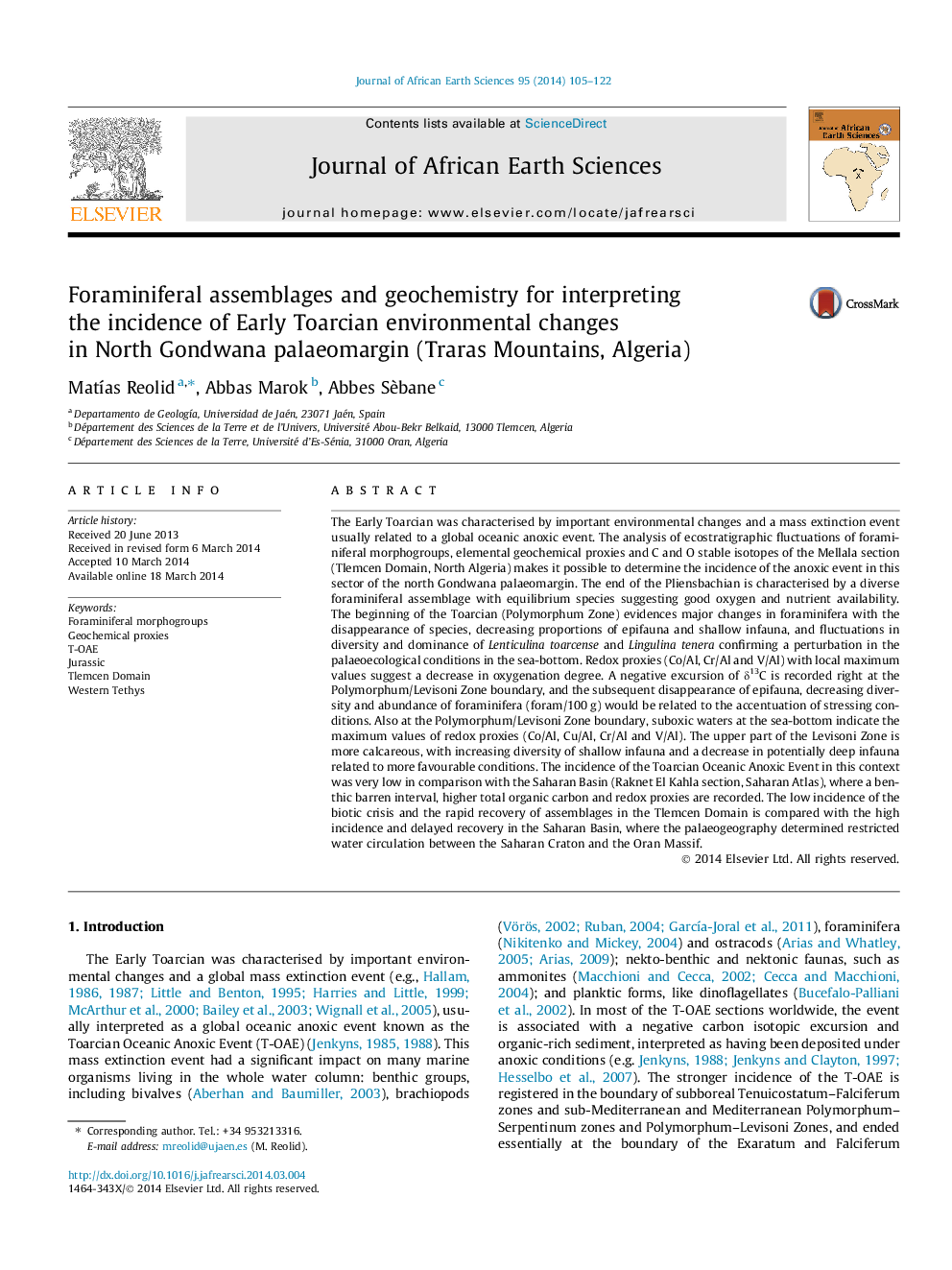| کد مقاله | کد نشریه | سال انتشار | مقاله انگلیسی | نسخه تمام متن |
|---|---|---|---|---|
| 4728821 | 1640211 | 2014 | 18 صفحه PDF | دانلود رایگان |
• Early Toarcian restricted oxygen conditions in the Traras Mountains.
• Foraminiferal assemblages show oxygen fluctuations.
• Proliferation of opportunists under stressful conditions in the bottom.
• Low abundance and diversity of foraminifera during Polymorphum–Levisoni Zone boundary.
• Incidence of T-OAE in north Gondwana palaeomargin controlled by palaeogeography.
The Early Toarcian was characterised by important environmental changes and a mass extinction event usually related to a global oceanic anoxic event. The analysis of ecostratigraphic fluctuations of foraminiferal morphogroups, elemental geochemical proxies and C and O stable isotopes of the Mellala section (Tlemcen Domain, North Algeria) makes it possible to determine the incidence of the anoxic event in this sector of the north Gondwana palaeomargin. The end of the Pliensbachian is characterised by a diverse foraminiferal assemblage with equilibrium species suggesting good oxygen and nutrient availability. The beginning of the Toarcian (Polymorphum Zone) evidences major changes in foraminifera with the disappearance of species, decreasing proportions of epifauna and shallow infauna, and fluctuations in diversity and dominance of Lenticulina toarcense and Lingulina tenera confirming a perturbation in the palaeoecological conditions in the sea-bottom. Redox proxies (Co/Al, Cr/Al and V/Al) with local maximum values suggest a decrease in oxygenation degree. A negative excursion of δ13C is recorded right at the Polymorphum/Levisoni Zone boundary, and the subsequent disappearance of epifauna, decreasing diversity and abundance of foraminifera (foram/100 g) would be related to the accentuation of stressing conditions. Also at the Polymorphum/Levisoni Zone boundary, suboxic waters at the sea-bottom indicate the maximum values of redox proxies (Co/Al, Cu/Al, Cr/Al and V/Al). The upper part of the Levisoni Zone is more calcareous, with increasing diversity of shallow infauna and a decrease in potentially deep infauna related to more favourable conditions. The incidence of the Toarcian Oceanic Anoxic Event in this context was very low in comparison with the Saharan Basin (Raknet El Kahla section, Saharan Atlas), where a benthic barren interval, higher total organic carbon and redox proxies are recorded. The low incidence of the biotic crisis and the rapid recovery of assemblages in the Tlemcen Domain is compared with the high incidence and delayed recovery in the Saharan Basin, where the palaeogeography determined restricted water circulation between the Saharan Craton and the Oran Massif.
Journal: Journal of African Earth Sciences - Volume 95, July 2014, Pages 105–122
